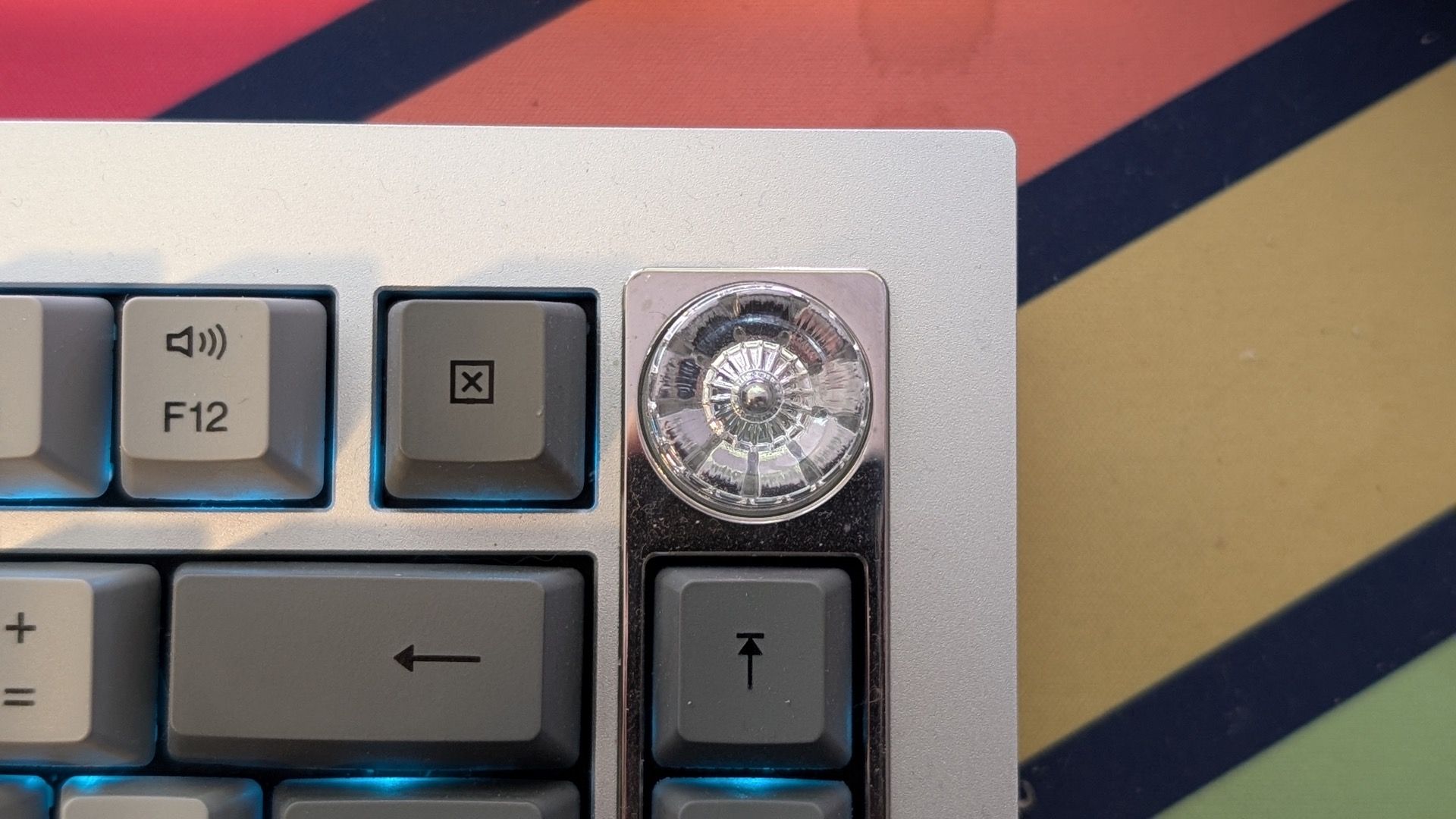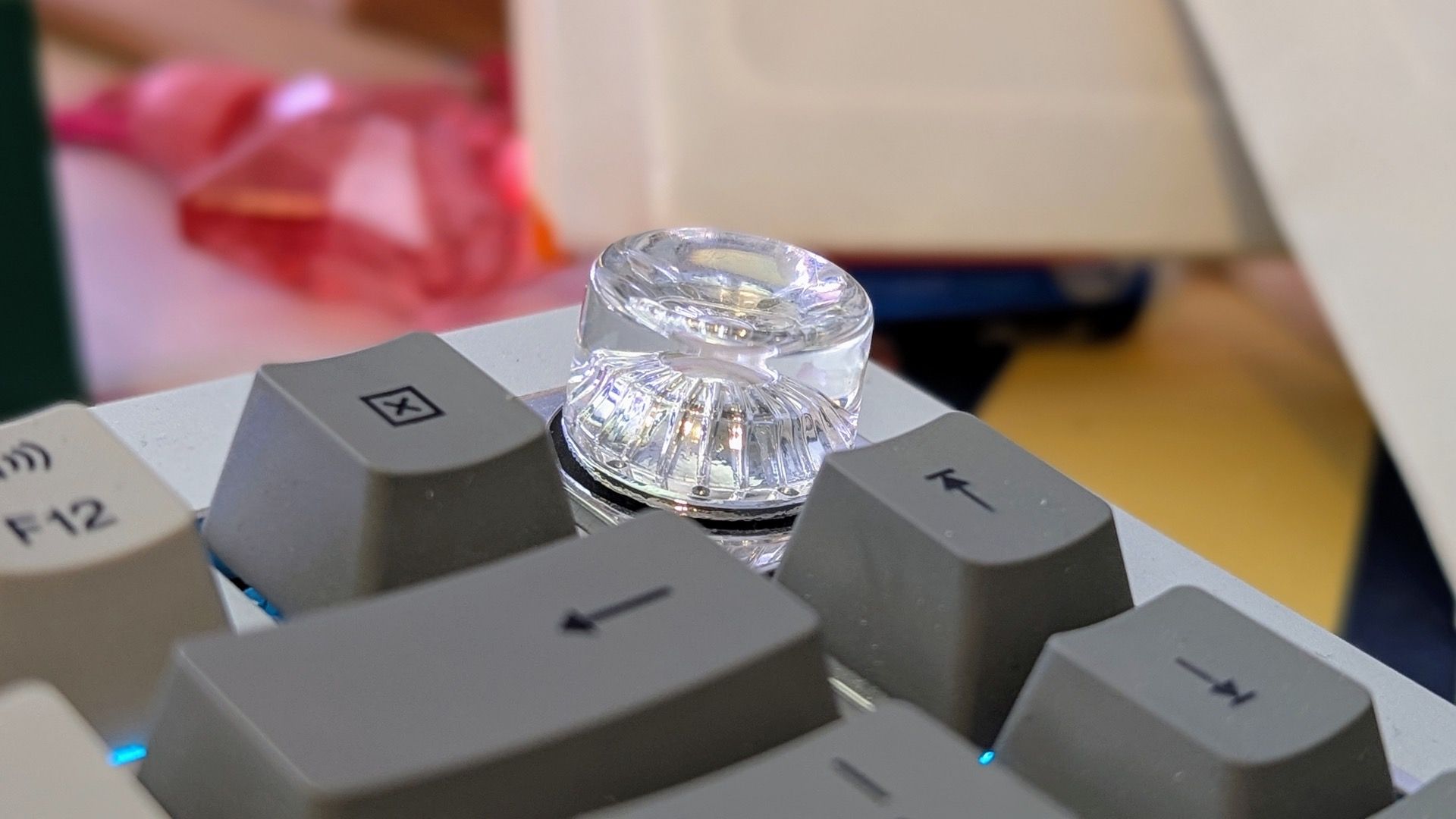In a world increasingly dominated by touch screens and digital controls, there’s something extra satisfying about physical, tactile feedback. So, why not go all in and get yourself a keyboard with a big ‘ol volume knob? I did, and it’s pretty awesome.
Now, I’ll admit this was not an opinion I ever anticipated having. For years, I have been using the tried and true Keychron K2. The 75% layout is my preferred layout, and it gets the job done without many bells and whistles. However, I was gifted the OnePlus Keyboard 81 Pro, which is a collab with Keychron. Not thinking much about it, I decided to give it a try. Hello, big knob.
The Knob Learning Curve
First and foremost, I had to get used to having physical volume controls on my keyboard. Well, let me rephrase that–I had to convince myself to use physical volume controls. The Keychron K2 has the typical Function keys at the top with volume keys, but for reasons I can’t explain, it’s not something I have ever used.
But look at that knob! I couldn’t allow myself to use a keyboard and not take advantage of such a unique feature. So, every time I instinctively moved my mouse to the volume slider on the screen, I stopped and turned the knob instead. Slowly but surely, I came to see the convenience of the knob.
This will come as no surprise to anyone, but physical volume controls are faster than using your mouse and a digital slider. Yes, the standard volume keys on a keyboard can accomplish this, but I still think a knob is superior.
With keyboard keys, there’s a slight hesitation to think about where you’re aiming your finger: “Volume Up” or “Volume Down.” Not to mention the third key if you want to mute. A knob is a single “button” for everything–just grab it and go.
Technically, a knob could still present you with that same hesitation–do I turn left or right? However, in my experience, there’s something about turning a knob to adjust volume that just feels more intuitive than multiple keys. My brain immediately knows to turn left for volume down and turn right for volume up. It can be pressed to mute/unmute, but turning the knob is so quick I almost always just crank it down to zero to mute.
The Satisfying Tactility
Speaking of intuition, there’s a certain satisfaction to the physicality of it all. Turning a knob and feeling the subtle “clicks” as it moves past each volume step just feels good. It’s a reminder of devices in the past that featured similar physical controls. Anyone who’s ever used a Walkman or even a CD player knows which direction to turn the knob without even thinking about it.
There’s also something to be said about the fact that it’s simply not another key on the keyboard. The Walkman, for example, has buttons and dials. You instinctively expect to use a button to play/pause, rewind, fast forward, and a dial to adjust volume. It may sound silly since it’s really not difficult to use keys for volume, but the difference between good design and great design is often those tiny little improvements.
A More Efficient Workflow
Let’s talk about those keyboard shortcuts a little more. As handy as they can be, they often require you to take your eyes off the screen and remember specific key combinations. On the flipside, software volume sliders can be imprecise and require you to leave your current task–which is very bad if you’re easily distracted like me.
A dedicated volume knob is always there, readily accessible, without interrupting your workflow. A video starts playing unexpectedly in a background tab, or the next song is randomly louder than I’d like. Do I meticulously hunt for the pause button? Or do I simply give that knob a spin to mute the chaos and get back to your flow? The small, physical control becomes a tangible anchor that lives outside the mess of my digital landscape.
It’s also not just about convenience–it’s about precision. With a knob, you have a much finer degree of adjustment than you typically get with digital sliders or stepped volume controls. You can dial in the exact audio level you want with a satisfying degree of precision.

Related
OnePlus Keyboard 81 Pro Review: A Refined and Fully Assembled Mechanical Keyboard
In partnership with Keychron, the OnePlus Keyboard 81 Pro brings unique switches and keycaps to a premium aluminum frame.
More Use Than You Think
Look, if you already have a great knob-less keyboard, you might argue that it’s an unnecessary addition or a relic of the past. But in a market saturated with sleek, minimalist designs that often prioritize form over function, a physical volume knob stands out as a genuinely useful feature. It’s a testament to the idea that sometimes, the old-school solutions are the best.
I promise you will find yourself using it more than you expect. Adjusting the volume during a video call without having to bring the meeting controls to the forefront. Fine-tuning the background music while you work. Quickly muting your system when someone walks into the room. These small, everyday interactions become just a little bit smoother and a little bit more intuitive.
So, the next time you’re considering a new keyboard, make a point to look for some knob-adorned models. It might seem insignificant, but it could just be the tactile joy and practical convenience you didn’t realize you were missing. It’s a small touch that can make a surprisingly big difference in your daily life. Sometimes, the best interfaces are the ones you can feel.






